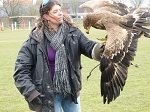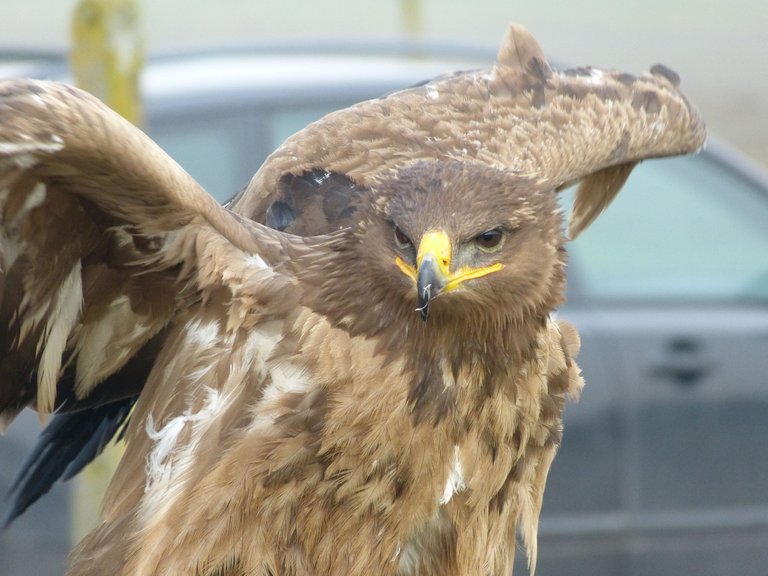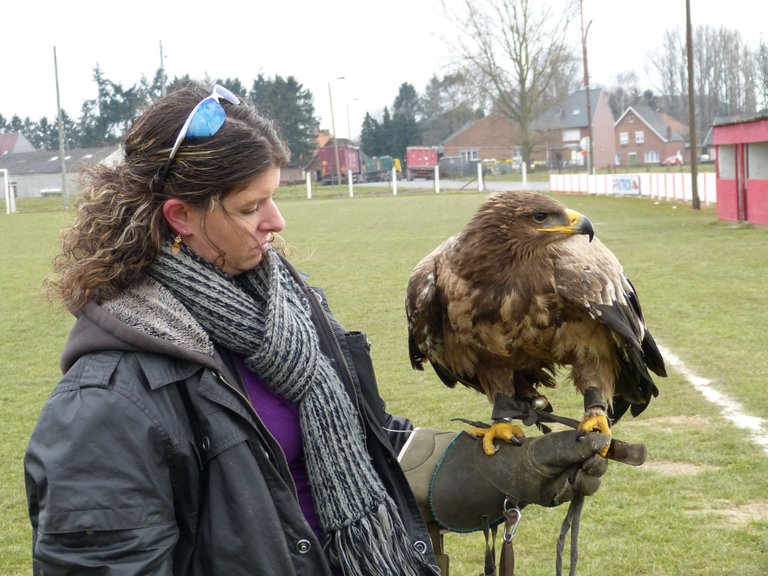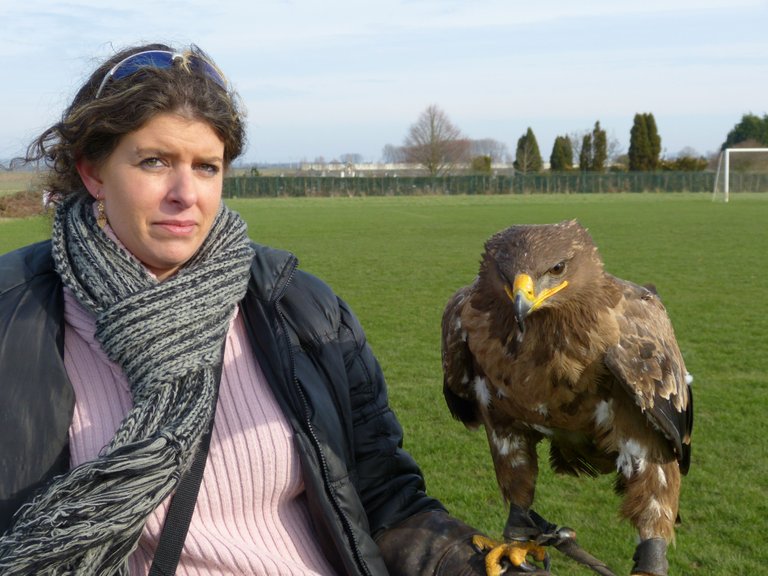I have always loved falconry but even more the steppe eagle is breathtakingly beautiful.
From an unusual intelligence, the perfect bird.
I give you a description of this wonderful bird as well as photos taken by me and with me :)
The female is bigger than the male. In adult steppe eagles, the body and small underwing covers are dark-brown, fairly uniform, often with a lighter throat. The flight feathers and rectrices are paler and grayer, barred with dark, with a broad terminal band. It is completely dark on it, but the base of the primaries is paler and it has a red spot on the nape of the neck.
The beak is yellow, with bright yellow commissures. The legs are yellow.
Juveniles have a broad white band in the middle of the lower wing, which will fade as adult plumage grows in about two years. They wear a gray-brown plumage more or less pale with russet yellow spots on the shoulders. The underside of the wings is red.
Habitat
He lives in the steppes and semi-desert areas. It nests in low mountain areas and hills. Appreciating open areas conducive to predation, he can live at medium altitudes.
Behavior character traits
To feed, the eagle steppes high enough, and literally plunges on its prey. He also places himself in ambush, waiting at the entrance of a burrow, and also catches his prey while walking on the ground. It is also equipped with powerful greenhouses, adapted to its way of life. He spends most of the time on the ground.
It is a migratory raptor. From the beginning of autumn, he leaves the peeled steppes of Central Asia towards the savannas of Sudan, Ethiopia and all of East Africa to Botswana.
The flight: The steppe eagle has an active flight, but quite heavy. His beats are quite slow and deep. It hovers with the wings stretched at the level of the body, or with the hand slightly curved down.
Diet and diet
*The steppe eagle consumes mammals, birds, reptiles and insects. It can consume thousands of grasshoppers when the insect season is in full swing. In winter, he looks for termites. It also feeds on carrion of small animals.
Nesting reproduction
The steppe eagle builds its nest on the ground or on a shrub. It is located so as to offer a wide view of the surroundings. It is a platform made of branches, often one meter wide, lined with small twigs and materials found on the sector.
The female lays 1 to 3 eggs. Incubation lasts about 45 days. The chicks are covered with white down at birth, becoming greyish white a little later. The young leave the nest after two months.
Thank you for reading me





What a beautifully scary creature is this :)
These are wonderful creatures yes